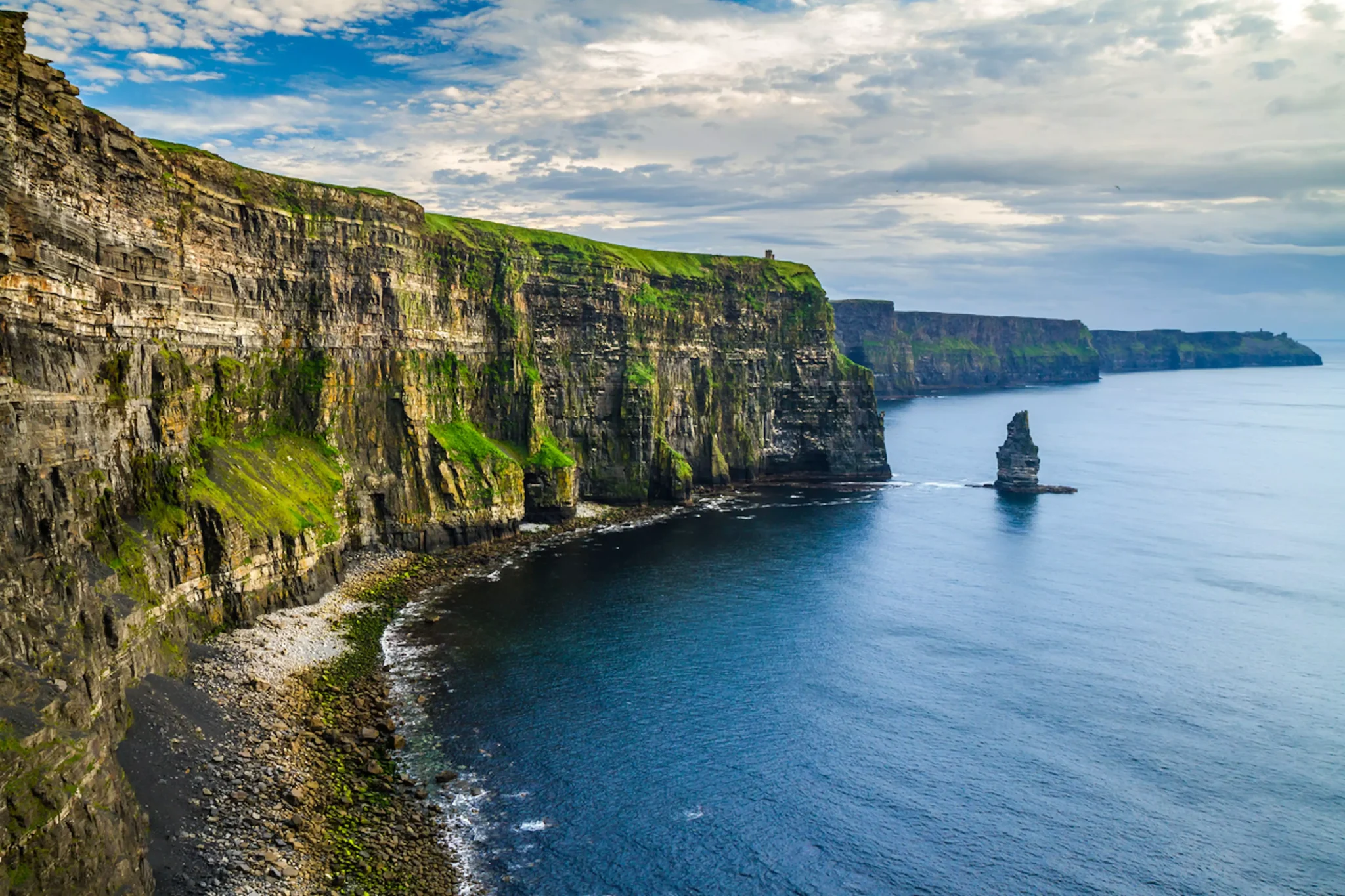Ireland packs a surprising amount of history, scenery, and personality into a small space. Traveling from Dublin to the Cliffs of Moher offers a snapshot of the country’s dual identity: urban and rural, modern and ancient, lively and tranquil. Dublin Cliffs of Moher
The journey is more than just a transfer from one place to another—it’s a transition from the bustling, cosmopolitan capital to the raw, windswept edge of the Atlantic.
Starting in Dublin
Dublin is where most travelers land, and it makes for a perfect introduction to Ireland. The city is compact and walkable, with a rhythm that’s easy to settle into. There’s no need to rush; Dublin is a place best absorbed on foot, with stops in between.
History is everywhere. You might begin with a visit to Trinity College to see the Book of Kells, an illuminated manuscript dating back to the 9th century. The Long Room in the Old Library, with its dark wood and towering shelves, feels like stepping into another time. Just a few blocks away is Dublin Castle, originally built in the 13th century and now a symbol of the city’s layered political past.
But Dublin isn’t all stone walls and silent libraries. The city has a pulse. In the Temple Bar area, cobbled streets are lined with pubs, cafes, and music spilling into the evening air. Yes, it’s touristy—but it’s also genuinely fun. Grab a pint of Guinness and sit back while local musicians play everything from traditional Irish folk to acoustic covers of rock standards.
For something a little more grounded, head to the neighborhoods of Ranelagh or Stoneybatter. These areas show off a quieter, more local side of Dublin. You’ll find coffee shops, secondhand bookstores, and parks where dogs outnumber people.
The Journey West
Leaving Dublin, the scenery shifts. The train or bus journey westward is about three hours, though renting a car gives you more freedom and access to small towns along the way. As you travel, city blocks give way to rolling fields and low stone walls. Sheep graze on hillsides, and clouds hang low over the landscape. It’s the Ireland most people imagine—and it lives up to the picture.
If you’re driving, it’s worth stopping in Galway, a small city with a strong cultural identity. Galway is known for its music scene, seafood, and lively atmosphere. It sits on the edge of the Atlantic and feels like a place that has one foot in the land and one in the sea. From Galway, the Cliffs of Moher are just over an hour’s drive through winding country roads and past tiny villages.
The Cliffs of Moher
Nothing quite prepares you for the scale and drama of the Cliffs of Moher. Rising over 700 feet above the Atlantic Ocean, the cliffs stretch for about 14 kilometers along the western coast of County Clare. The first sight of them—sheer walls of rock plunging into the churning sea—is breathtaking.
There’s a visitor center built into the hillside, discreet and low-impact, which offers exhibits on geology, wildlife, and history. But the real experience begins when you step outside and follow the path along the edge.
On a clear day, you can see the Aran Islands in the distance and even the mountains of Connemara. The wind is constant, sometimes harsh, and always loud. It fills your ears and seems to carry the sound of the ocean up from far below. The air smells of salt and grass.
The cliffs change depending on the weather. In sunshine, they glow green and gray, the rock faces streaked with sediment from millions of years. In fog, they appear out of nowhere, massive and close, then vanish again into white. Rain transforms the landscape into something more solemn, even cinematic.
Birdwatchers will spot puffins, razorbills, and kittiwakes nesting along the cliffs. Photographers come for the dramatic light and shadows. Hikers can take the longer coastal trail that runs between Doolin and Liscannor, offering quieter viewpoints away from the main visitor center.
Despite their popularity, the Cliffs of Moher rarely feel overcrowded. The openness of the site and the wind seem to scatter people naturally. There’s space to breathe, to sit quietly, and to take it in.
The Return
Returning to Dublin—or continuing on to other parts of Ireland—feels different after standing on the edge of the cliffs. The contrast between the capital city and the western coast is sharp but revealing. Dublin shows off Ireland’s intellect, humor, and creativity. The Cliffs of Moher remind you of their raw beauty, their deep history, and their connection to the natural world.
This route—Dublin to the cliffs—is more than just a travel itinerary. It’s a compressed version of Ireland itself. The friendly pub talk and the silent, wind-beaten stone. The literary heritage and the ancient landscape. The ease of the city and the drama of the coast.
You don’t need a lot of time to experience it. A few days are enough. But the images and impressions stay with you longer: the golden light over the River Liffey at sunset, the crash of waves against stone, the sound of fiddles drifting from a side street.
Ireland, it turns out, is not just a place you visit. It’s a place that lingers.




